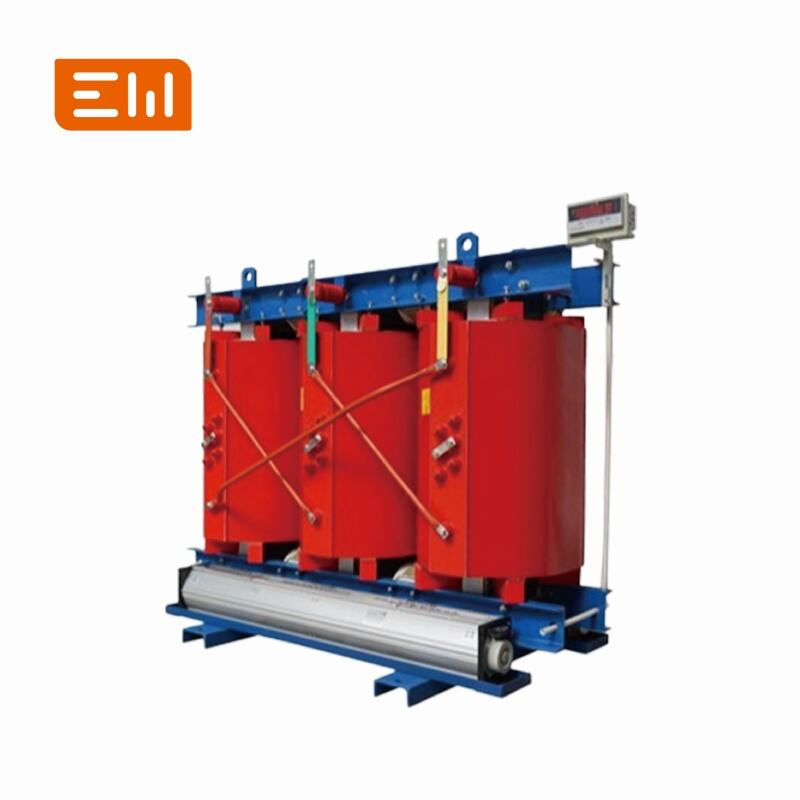Understanding Cast Resin Dry Type Transformers: A Technical Guide
Within the family of dry type transformers, the cast resin dry type transformer stands out for its exceptional durability, safety, and reliability. This technology has become the gold standard for a wide range of indoor and critical applications. This guide provides a technical deep-dive into what a cast resin transformer is, how it's made, and why it might be the perfect solution for your project.
What is a Cast Resin Transformer?
A cast resin transformer is a specific type of dry type transformer where the primary and secondary windings are completely encapsulated in a solid block of epoxy resin. This process creates a robust, non-hazardous, and maintenance-free insulation system that protects the windings from environmental factors and mechanical stress.
Models like the https://www.enweielectric.com/products/transformers/dry-type-transformers/scb10-three-phase-dry-type-transformer">Enwei Electric SCB10 and https://www.enweielectric.com/products/transformers/dry-type-transformers/scb11-three-phase-dry-type-transformer">SCB11 series are prime examples of this advanced technology.
The Manufacturing Process: The Key to Durability
The superior quality of a cast resin transformer comes from its meticulous manufacturing process:
- Winding: The primary and secondary coils are wound using high-conductivity copper or aluminum conductors.
- Molding: The windings are placed into a precision-engineered mold.
- Vacuum Casting: The mold is placed in a vacuum chamber. A carefully mixed epoxy resin compound is then poured into the mold under vacuum. The vacuum removes all air and moisture, ensuring the resin penetrates every void within the windings.
- Curing: The resin-filled mold is then cured in a computer-controlled oven for several hours. This process hardens the epoxy into a solid, mechanically strong, and void-free mass.
This process results in a transformer coil that is extremely resilient and well-protected.
Key Advantages of Cast Resin Technology
1. Exceptional Moisture and Pollution Resistance
The solid epoxy encapsulation creates an impenetrable barrier against moisture, dust, salt, and chemical contaminants. This makes cast resin transformers ideal for harsh or humid environments where other types of transformers might fail. They can be energized directly after long periods of shutdown without needing to be pre-dried.
2. High Mechanical Strength
The cured resin provides powerful structural support to the windings, giving the transformer outstanding strength to withstand the immense mechanical forces generated during a short circuit event. This significantly enhances the transformer's reliability and lifespan.
3. Superior Fire Safety
The epoxy resin used is a flame-retardant, self-extinguishing material. This, combined with the absence of flammable oil, gives cast resin transformers the highest level of fire safety (Class F1). They do not produce toxic gases when exposed to fire, making them the safest choice for installation in public buildings, underground tunnels, and critical facilities.
4. Low Maintenance
As a solid-state device with no moving parts or liquids to manage, cast resin transformers are virtually maintenance-free. This eliminates the costs and labor associated with oil testing, filtration, and leak prevention, leading to a lower total cost of ownership.
5. Compact and Flexible Design
While dry types can be larger than oil-filled units, the robust nature of cast resin allows for more compact and flexible designs compared to other dry type methods. They can be installed closer to the point of use, reducing cable lengths and associated power losses.
Cast Resin vs. VPI (Vacuum Pressure Impregnated)
While both are types of dry transformers, cast resin offers distinct advantages over VPI:
| Feature | Cast Resin Transformer | VPI Transformer |
|---|---|---|
| Protection | Total encapsulation in solid resin | Coated with varnish, windings partially exposed |
| Moisture Resistance | Excellent; impervious to moisture | Good; but can absorb moisture over time |
| Mechanical Strength | Very High | Moderate |
| Best Use Case | Harsh, humid, or critical-safety environments | Controlled, clean, and dry indoor environments |
Ideal Applications for Cast Resin Transformers
The unique benefits of cast resin technology make it the preferred choice for:
- Hospitals and Airports
- Data Centers and Telecommunication Hubs
- Underground Substations and Tunnels
- High-Rise Commercial and Residential Buildings
- Marine and Offshore Platforms
- Heavy Industries (Chemical, Steel, Paper Mills)
- Renewable Energy (Solar and Wind)
Conclusion: The Ultimate in Dry Type Reliability
The cast resin dry type transformer represents the peak of transformer technology for applications where safety, reliability, and low maintenance are non-negotiable. Its robust, fully encapsulated design provides superior protection against environmental and electrical stresses, ensuring a long and dependable service life.
When you choose a cast resin transformer, you are investing in peace of mind and long-term operational excellence.
Discover the reliability of cast resin technology with Enwei Electric.
- https://www.enweielectric.com/contact-us">Contact our specialists to find the right SCB model for your project.
- https://www.enweielectric.com/products/transformers/dry-type-transformers">Explore our comprehensive range of Cast Resin Dry Type Transformers.
Table of Contents
- Understanding Cast Resin Dry Type Transformers: A Technical Guide
- What is a Cast Resin Transformer?
- The Manufacturing Process: The Key to Durability
- Key Advantages of Cast Resin Technology
- Cast Resin vs. VPI (Vacuum Pressure Impregnated)
- Ideal Applications for Cast Resin Transformers
- Conclusion: The Ultimate in Dry Type Reliability

